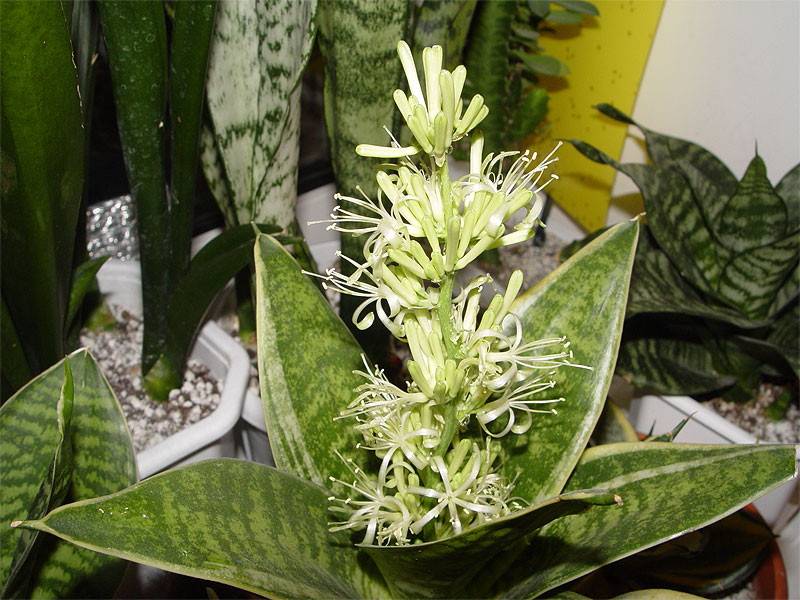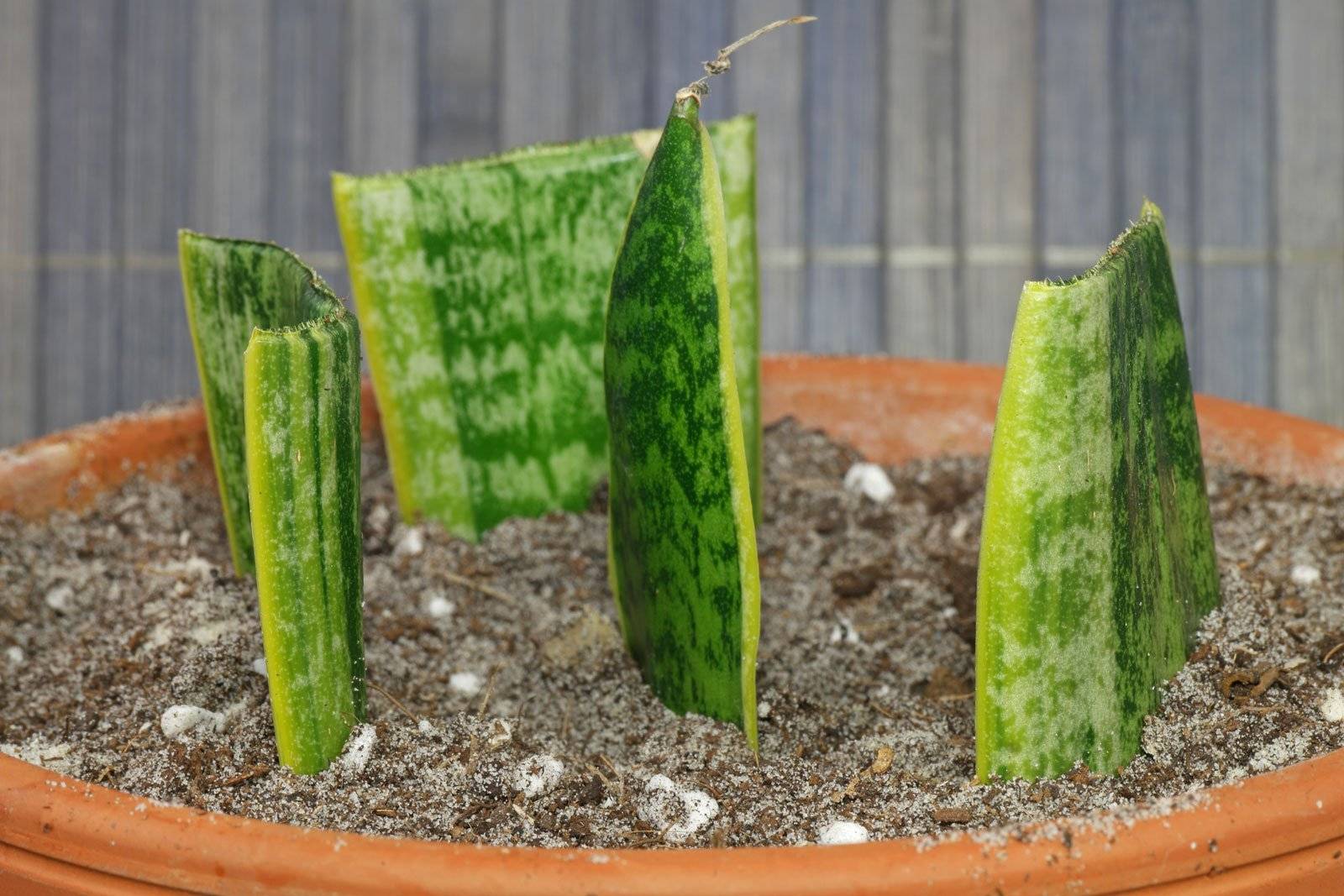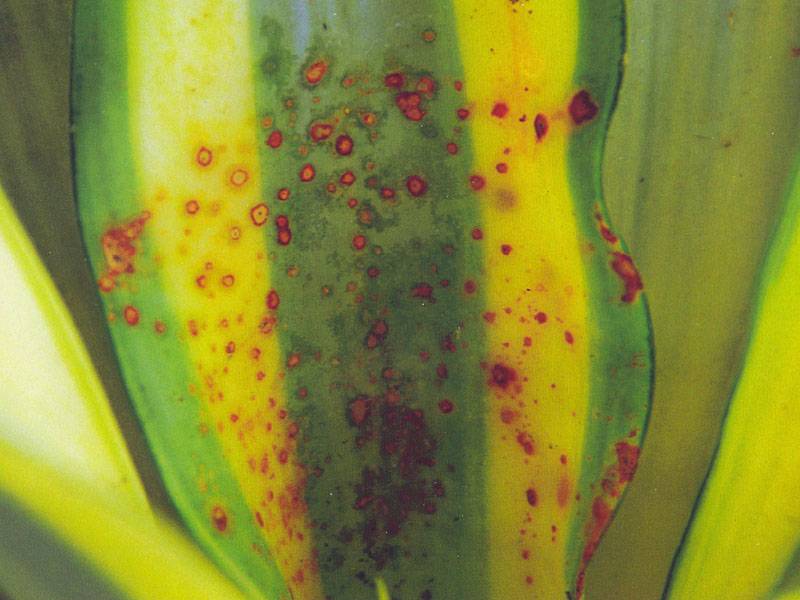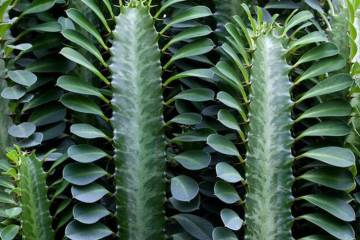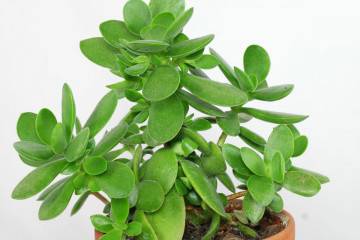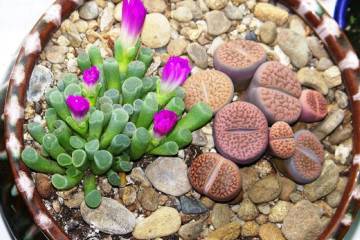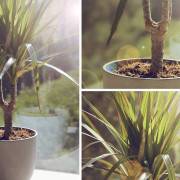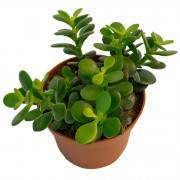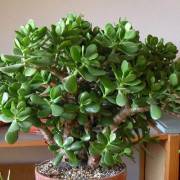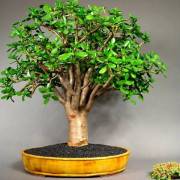Sansevieria Hanni - home care
Content:
Sansevieria has several names: mother-in-law's tongue, leopard lily, pike tail. There are tall and undersized types of culture. These plants are unpretentious, they can be grown by novice growers and very busy people. Below is information on planting and caring for Hanni sansevieria at home.
What does it look like and what family it belongs to
The plant was bred by the breeder S. Khan, in whose honor it got its name. The task was set for the specialist: to bring out a low-growing variety, with which he successfully coped.
The description indicates that Hanni sansevieria is a rosette-type herbaceous bush no more than 30 cm high. The leaves are thick, leathery, dark green in color. Their width is 4-6 cm. Light stripes are located along the entire surface of the leaf plates.
At the base of the mother plant, children grow, which can be planted and get independent bushes. A peduncle is formed in the center of the rosette. Small white buds. Flowers are of no decorative value, the culture attracts attention with beautiful leaves.
Common varieties
Several varieties have been bred on the basis of the original plant. The most popular are the following:
- Hanni Gold. A very beautiful variety. Golden leaves are decorated with longitudinal yellow stripes;
- Hanni Christata. The peculiarity of the variety is in sheet plates, the edges of which fold inward;
- Hanni Silver. The plant is so named because the main color of the leaves is silvery;
- Hanni Christata. The color of the bushes is speckled, the leaf plates are folded inward;
- Hanni Favorite. On Favorite sheet plates there are longitudinal golden stripes.
Features of home care
Sansevieria is an unpretentious houseplant. But to maintain decorativeness, you need to try to create conditions close to natural for him.
Temperature
The culture develops safely in the summer at a temperature of 20-25 ° C. The bushes can be taken out into the fresh air, protected from the bright rays of the sun. In winter, sansevieria will withstand temperatures of 10-20 ° C without losing its decorative effect.
Lighting
Only varieties with yellow stripes require bright lighting. For example, Golden Hanni sansevieria, when kept in partial shade, may lose its decorative effect. But even it needs to be shaded from direct sunlight. If this is not done, burns may appear on the sheet plates. The rest of the varieties develop well in partial shade.
Watering
Sansevieria is a succulent, so frequent watering is not required. In summer, it is enough to irrigate the land once a week. Water is used warm, settled for 1-2 days. In winter, the bushes are watered once a month.
Spraying
If the sheet plates are covered with dust, they are wiped with a damp cloth. Spraying sansevieria is not required. As a result of this procedure, water gets inside the outlet, stagnates, which can cause the plant to rot.
Humidity
Sansevieria Hahnii tolerates dry air easily.Therefore, there is no need to additionally moisturize it.
Priming
The culture needs light, loose soil. You can prepare it yourself from the following components:
- leafy land;
- turf;
- sand;
- charcoal.
In a flower shop, you can purchase a ready-made substrate for succulents, which consists of the same components.
Top dressing
From spring to autumn, Hanni Sansevieria is fed with cactus fertilizers. The dosage is selected 2 times less than indicated in the instructions. The procedure is carried out once a month.
Features of winter care
In winter, the plant must be given a dormant period. He is transferred to a cool room. Watering is rare, after the soil layer dries well. Top dressing in winter culture is not required.
When and how it blooms
If properly cared for, sansevieria can bloom. This happens during the warm season. Small white flowers and thin delicate aroma.
How does it multiply
At home, sansevieria can be propagated in several ways: cuttings, cuttings fragments, daughter rosettes.
Cuttings
The procedure is carried out as follows:
- Cut off the leaf at the base of the bush.
- Dry for 1 day.
- It is deepened at a slope of 0.5 cm into a mixture of peat and sand.
- Cover with a plastic bag.
- Put the pot with the shank in a warm, bright place.
Every day, the package is removed, the planting material is aired. The signal that the cutting has begun will be the appearance of new leaves at its base.
Fragments of cuttings
The procedure is similar to the previous one, only not a whole leaf is planted, but its fragments. The stalk is cut into several pieces using a sharp, sanitized instrument. Then they perform the same actions as when propagating with a whole leaf.
Daughter sockets
Adult sansevieria builds up daughter outlets. When transplanting, they are separated and planted in separate pots. Each section should have leaves and a root system.
Transfer
A plant purchased from a flower shop is placed in a shaded place for 2 weeks for adaptation. Then the sansevieria is transplanted as follows:
- Take a pot a little larger than the previous one.
- Drainage is poured onto the bottom, a third is filled with soil.
- Gently shake the bush out of the old container, prune dried roots if necessary.
- A flower is placed in the middle of the pot, covered with earth along the root collar.
- The substrate is lightly tamped, watered.
Excess water is poured from the pan. Sansevieria is placed in a shaded room for 3-5 days, then put in a permanent place.
Diseases and pests
The culture has good immunity, but still it can be affected by some diseases and pests:
- root rot. Happens due to over-watering. You can find it by sluggish, softened leaves. You can save the plant only by cutting off the tops of the cuttings and planting them in new soil;
- anthracnose. With this fungal infection, yellow, reddish-brown spots appear on the leaf plates. The affected cuttings must be removed, the bush must be sprayed with a fungicide;
- spider mite. The insect is easily identified by the presence of cobwebs around the outlet. The leaves turn pale, lose their decorative effect. The insect is washed off with soapy water;
- thrips. When damaged by a pest, the leaf plates acquire a gray-brown tint. Various insecticides are used against thrips.
Sansevieria Hanni is an unpretentious houseplant. The flower will not lose its decorative effect even when kept in partial shade. It will tolerate drought more easily than over-watering.If, due to excessive moisture, the sansevieria begins to disappear, it can be saved by propagating it with apical cuttings.


